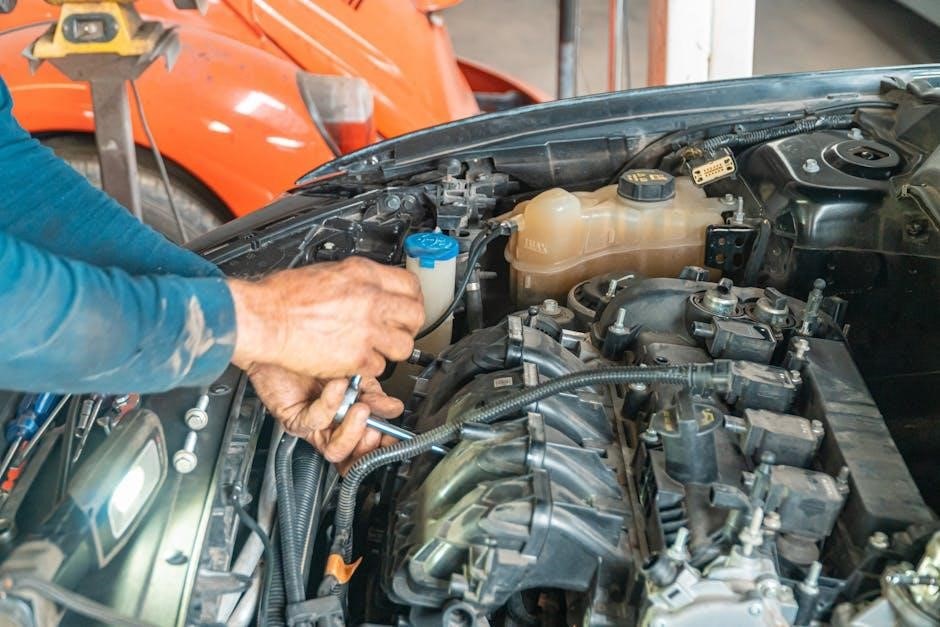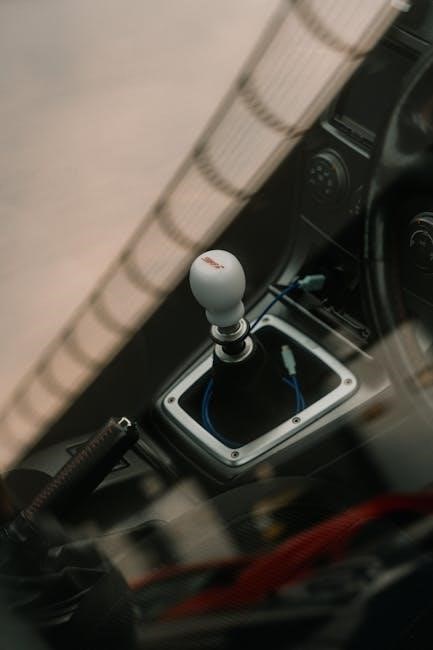The concept of a torque converter on manual gearbox is explored, discussing its potential applications and benefits, with
basic principles
and mechanisms of operation considered in detail always.
Basic Concept of Torque Converter
The basic concept of a torque converter involves the use of fluid to transmit mechanical power from the engine to the transmission, allowing for smooth power transfer and convenience. This is in contrast to manual transmissions, which use a clutch to engage and disengage the engine from the transmission. The torque converter is typically located between the engine’s flexplate and the transmission, and is designed to multiply the torque of the engine, allowing for increased power and efficiency. The concept of a torque converter is based on the principle of fluid dynamics, where the fluid is used to transfer power from the engine to the transmission. This allows for a smooth and seamless transfer of power, without the need for manual intervention. The basic concept of a torque converter is an important aspect of automatic transmissions, and is used in a wide range of vehicles. The use of a torque converter provides a number of benefits, including smooth power transfer and increased efficiency.
Role of Clutch in Manual Transmission
The role of the clutch in a manual transmission is to engage and disengage the engine from the transmission, allowing the driver to shift gears smoothly. The clutch is a critical component of a manual transmission, and is used to connect and disconnect the engine from the transmission. When the clutch is engaged, the engine is connected to the transmission, and power is transmitted to the wheels. When the clutch is disengaged, the engine is disconnected from the transmission, and the driver can shift gears. The clutch is typically operated by a pedal, which the driver presses down to disengage the clutch and shifts gears. The clutch plays a crucial role in the operation of a manual transmission, and is an essential component of the transmission system. The use of a clutch in a manual transmission allows for precise control over the vehicle, and is preferred by many drivers. The clutch is a key part of the manual transmission system, and is used in a wide range of vehicles.

Working of Torque Converter
Transmission of mechanical power occurs through fluid, using a
complex system
to facilitate smooth operation always.
Fluid Transmission of Mechanical Power
The process of fluid transmission of mechanical power in a torque converter involves the use of a fluid to transfer power from the engine to the transmission. This is achieved through the use of a pump, a turbine, and a stator, which work together to facilitate the transmission of power. The pump is connected to the engine and pumps fluid through the torque converter, while the turbine is connected to the transmission and is driven by the fluid. The stator helps to direct the fluid flow and optimize the power transmission. The use of fluid transmission allows for smooth and efficient power transfer, and is a key component of the torque converter’s operation. The fluid used in the torque converter is typically a type of automatic transmission fluid, which is designed to provide the necessary lubrication and cooling for the system. Overall, the fluid transmission of mechanical power is a critical aspect of the torque converter’s function.
Comparison with Manual Clutch
A comparison between a torque converter and a manual clutch reveals distinct differences in their operation and functionality. The manual clutch is a mechanical component that engages and disengages the engine from the transmission, allowing the driver to shift gears manually. In contrast, the torque converter is a hydraulic component that uses fluid to transmit power from the engine to the transmission, providing a smooth and automatic shifting experience. The torque converter is designed to replace the manual clutch in automatic transmissions, offering convenience and ease of use. However, the manual clutch provides more control and driver engagement, making it a preferred choice for driving enthusiasts. The comparison between these two components highlights their unique characteristics and advantages, demonstrating that each has its own strengths and weaknesses. The choice between a torque converter and a manual clutch ultimately depends on the driver’s preferences and needs. Overall, both components play crucial roles in their respective transmission systems.

Advantages of Torque Converter
Torque converters offer smooth power transfer and convenience, making them a desirable component in automatic transmissions, with various
benefits
always.
Smooth Power Transfer
The primary advantage of a torque converter is its ability to provide smooth power transfer from the engine to the transmission, allowing for seamless acceleration and deceleration. This is achieved through the use of fluid dynamics, where the torque converter uses a fluid-filled chamber to transmit mechanical power. As a result, the engine and transmission are able to operate at different speeds, enabling smooth shifting and reducing the risk of wear and tear on the transmission. The torque converter’s ability to slip and then lock up also helps to reduce shock loads on the transmission, further contributing to smooth power transfer. In addition, the torque converter’s design enables it to handle high torque inputs, making it an ideal component for high-performance vehicles. Overall, the smooth power transfer provided by a torque converter makes it an essential component in many modern vehicles, and its benefits are numerous. With proper maintenance, a torque converter can provide years of reliable service.
Convenience and Reduced Maintenance
The incorporation of a torque converter into a manual transmission system can provide significant convenience and reduced maintenance benefits. By eliminating the need for manual clutch operation, drivers can enjoy a more relaxed driving experience, particularly in heavy traffic or hilly terrain. Additionally, the torque converter’s ability to automatically adjust to changing driving conditions reduces the risk of wear and tear on the transmission, resulting in lower maintenance costs over time. The use of a torque converter also eliminates the need for manual clutch repairs and replacements, which can be costly and time-consuming. Overall, the convenience and reduced maintenance benefits of a torque converter make it an attractive option for drivers who want a more hassle-free driving experience. With a torque converter, drivers can focus on the road ahead, rather than worrying about manual clutch operation. This can lead to a more enjoyable and stress-free driving experience. Regular fluid and filter changes are still necessary.

Disadvantages of Torque Converter
Exploring the drawbacks, including potential fuel efficiency sacrifices and complexity, with
- itemized
lists of concerns always considered in the discussion of torque converter disadvantages.

Potential Sacrifice of Fuel Efficiency
The use of a torque converter in a manual gearbox may result in a potential sacrifice of fuel efficiency, as the converter can cause power losses due to its fluid-based operation; This is because the torque converter uses fluid to transmit mechanical power, which can lead to energy losses and decreased fuel efficiency. According to information from the Internet, the torque converter’s design and functionality can impact fuel efficiency, with some designs being more efficient than others. The potential sacrifice of fuel efficiency is a significant consideration for vehicle manufacturers and drivers, as it can impact the overall performance and cost of ownership of the vehicle. Furthermore, the trade-off between fuel efficiency and the convenience offered by the torque converter must be carefully evaluated. The impact of the torque converter on fuel efficiency is a complex issue, involving various factors and considerations, including the design of the converter, the type of vehicle, and driving conditions. Overall, the potential sacrifice of fuel efficiency is an important aspect of the torque converter’s operation and must be taken into account.
Complexity of Lockup Mechanism
The lockup mechanism of a torque converter is a complex system that enables the converter to lock up and directly connect the engine to the transmission, reducing slip and improving fuel efficiency. This mechanism involves a clutch pack and a set of valves that control the flow of fluid, allowing the converter to engage and disengage the lockup clutch. The complexity of the lockup mechanism can make it prone to faults and require regular maintenance, which can be a challenge for drivers and vehicle manufacturers. According to information from the Internet, the lockup mechanism is a critical component of the torque converter, and its proper functioning is essential for optimal performance. The design and operation of the lockup mechanism must be carefully considered to ensure reliable and efficient operation. Additionally, the complexity of the lockup mechanism can impact the overall cost and reliability of the vehicle, making it an important consideration for vehicle manufacturers and drivers. The mechanism’s complexity requires specialized knowledge and skills to repair and maintain.
